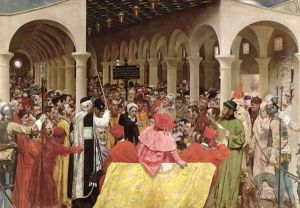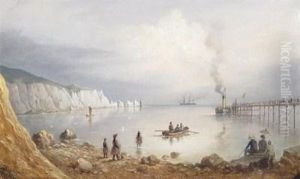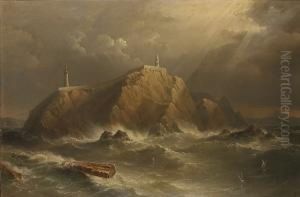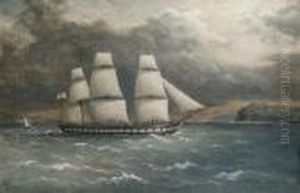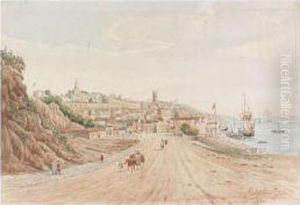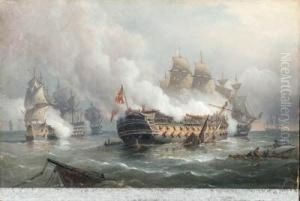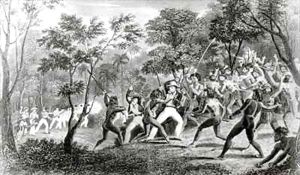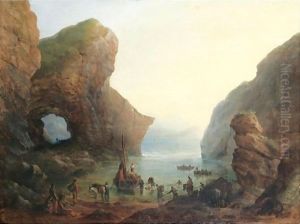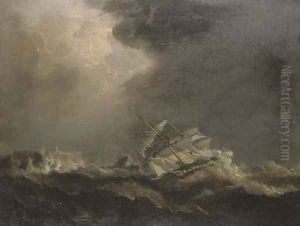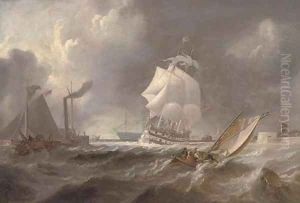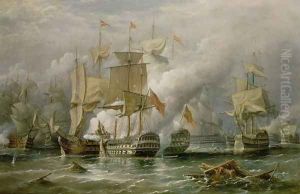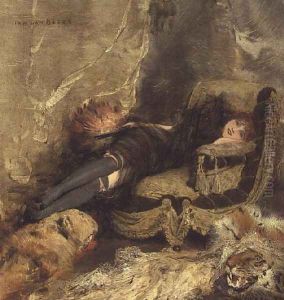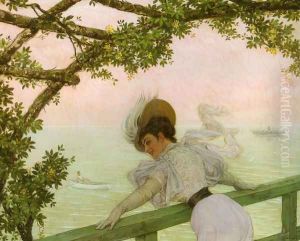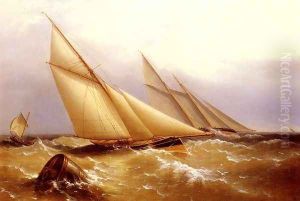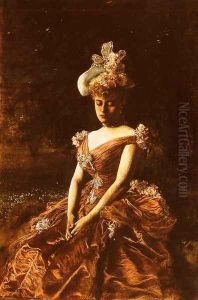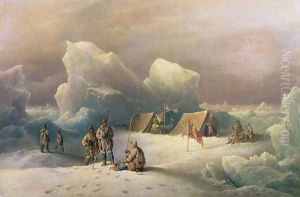Richard Bridges Beechey Paintings
Richard Brydges Beechey was a British painter and naval officer born on May 17, 1808, in London, England. He was one of the sons of Sir William Beechey, a well-known portraitist, and his second wife, Anne Phyllis Jessop. His family's artistic environment had a significant impact on his career choice, and he developed a strong interest in painting from a young age.
Beechey joined the Royal Navy in 1824, and his career as a naval officer took him to various parts of the world, including the Mediterranean, the Pacific, and the coast of West Africa. His experiences at sea greatly influenced his artistic work, and he became renowned for his maritime scenes, depicting ships and coastal landscapes with great skill and accuracy.
While serving in the navy, Beechey continued to paint, and his works were exhibited at the Royal Academy and the British Institution. He was particularly skilled in watercolor but also worked in oils. His paintings were not only appreciated for their artistic merit but also for their documentary value, as they often represented specific naval vessels or important maritime events of his time.
After retiring from the navy with the rank of admiral, Beechey settled in Ireland and became involved in the local art scene. He was a member of the Royal Hibernian Academy and frequently exhibited his work there. Beechey's paintings are a valuable record of 19th-century naval history and have been collected by maritime museums and private collectors worldwide.
Richard Brydges Beechey's contribution to maritime art is significant, and his work is recognized for its historical importance as well as its aesthetic quality. His legacy continues to be celebrated by those who appreciate naval history and the art of the sea. Beechey passed away on March 8, 1895, in Ireland, leaving behind a rich collection of maritime paintings that continue to be admired to this day.
